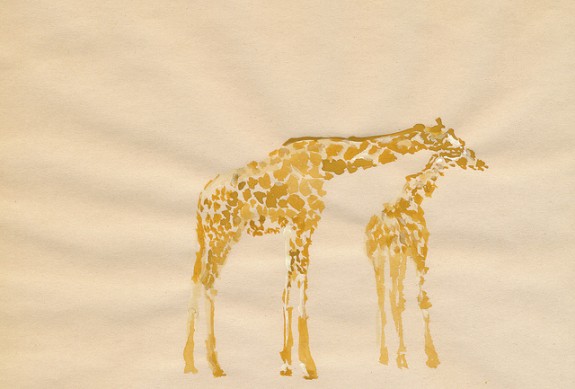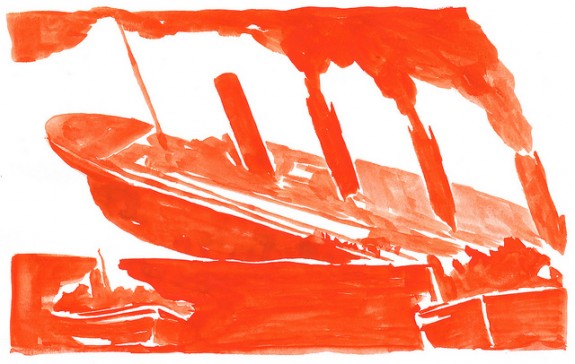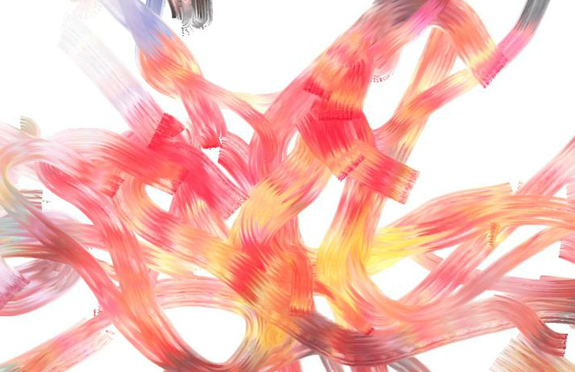Digital brushstrokes twist and change their color and hue. They snake across the screen, overlapping and tangling until they become something whole: an image perhaps, or an evocation of an Old Master painting. In the background, there can be playful music, like something from a child’s toy. The videos are beautiful, but they’re something more: they’re working demonstrations of OpenGL, an open-source programming library devised by an artist who works under an alias, Kynd.info.
Kynd’s bright watercolors are painted from photo or video stills, reminiscent of contemporary painters Peter Doig or Luc Tuymans. His lines are clean, without fuss over the stroke—and because they are monochromatic, there’s no conflict between layers of colored pigment. They may seem a simple task to emulate, but it’s the brushstroke and attention to shadow where difficulty lies.

Transitioning from his background as a fine artist, Kynd began digital processing to further advance his creative ideas. He’d studied oil painting at a Tokyo art university before moving into print, Web, and now, mobile technologies. His interest comes from an acceptance of today’s information glut (which can be as tangled one of Kynd’s ever-moving brushstrokes) He wrote in an email to me, “The great majority of my knowledge consists of what I’ve never directly seen.” He says many of the things he thinks he knows, come filtered through the Internet and other media channels. He says it’s better to embrace the information flood and harness it, rather than bemoaning the overwhelming wave of instantaneous content.

As a lead designer and producer for a large, multinational electronics corporation, Kynd lives at the front of that information wave, but he also has a conflict of interest, shown in his art—which explains his alias. He documents his programming work through a blog that’s (perhaps paradoxically) difficult to navigate. There are no hyperlinks on the homepage and only after poking around on Twitter and Vimeo and finding his email address, was I able to put together more parts of the Kynd puzzle.
The artist wrote to me that when he began in the field, he “found designing interactive animation very fun” but also not as creative as he’d hoped. He describes “Flash at that time [as] not very fast and not good at handling bitmap images, which was quite limiting in creating animations with [a] fine finish. That’s how I came to study processing, though I knew it wasn’t very useful for commercial web design.”
Originally, Kynd wanted to mimic Adobe Photoshop brushes so that texture and shading could be emulated. Eventually, he wanted to make “good paintings” with these tools. He wanted the end result to be the real world equivalent of copying one of the Old Masters. The result: versions of Picasso’s “Las Meninas,” which in turn was a study of Velasquez.
In terms of coding the actual brushstrokes, Kynd divulges that “making the computer-generated paintings look good is quite a tricky . . . It involves knowledge of the medium and technique that is quite hard to explain.” he has to interpret the images into a logical algorithm, “in which everything has to be defined.” And the results are subjective: “What the hell” is it, he wonders, that makes a painting “look good!?”
Would Kynd be interested in making a program for his own monochromatic watercolors? Perhaps, but he has yet to achieve pleasing results. “My paintings quite arbitrarily pick and drop the detail and I often leave a great part of them blank that I retrospectively think is somehow related to how human memory works. And this process is quite difficult for a computer to simulate,” he says.
